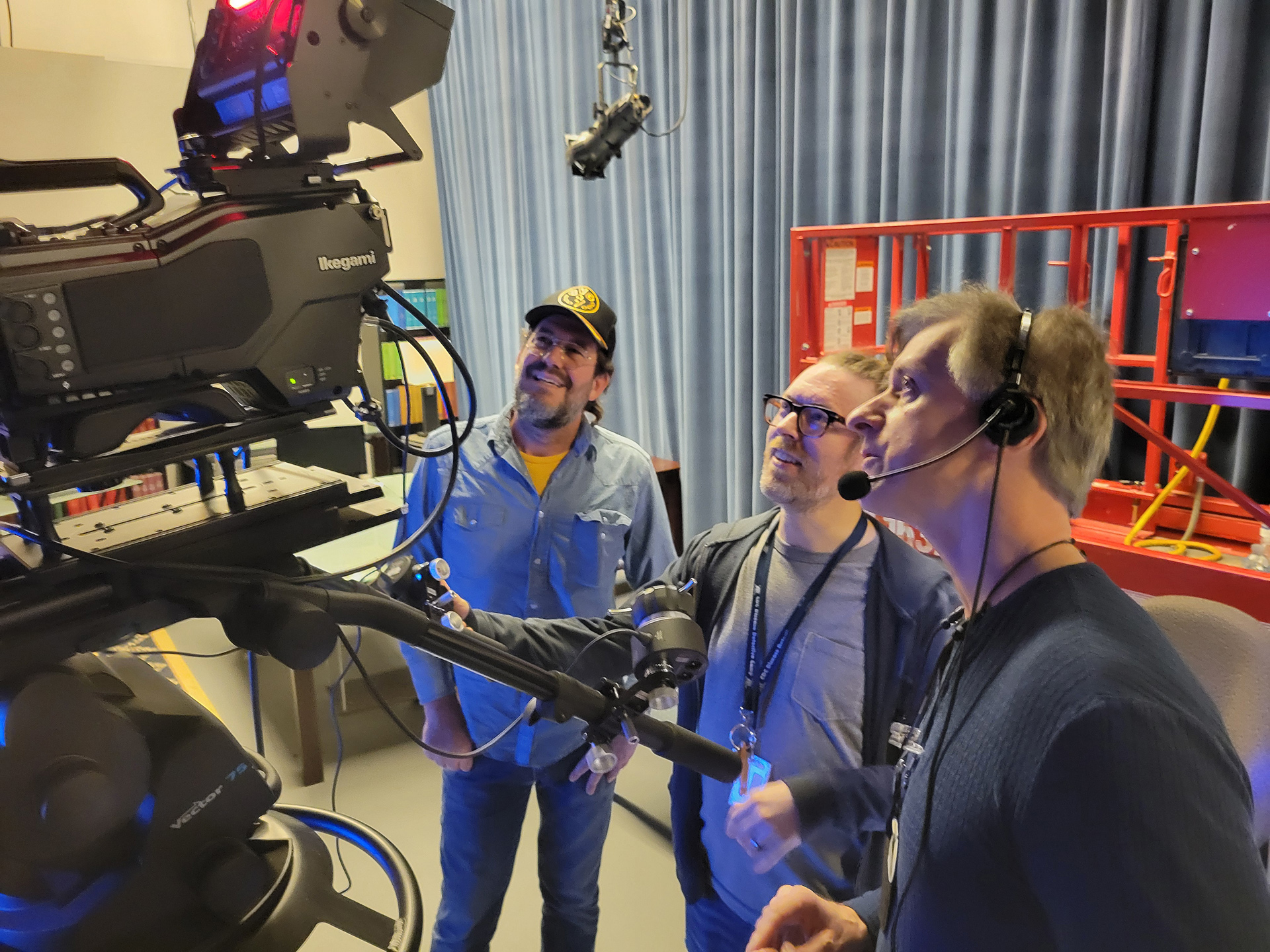CDC Upgrades to Ikegami UHK-X700 4K HDR Cameras
The Broadcast & Multimedia division of the national health service has upgraded its technical facilities with Ikegami UHK-X700 cameras

MAHWAH, N.J.—Ikegami has announced that the U.S. national public health agency, the Centers for Disease Control & Prevention (CDC), has upgraded the technical facilities of its Broadcast & Multimedia division to Ikegami UHK-X700 cameras.
“This project is part of CDC’s ongoing efforts to refine and modernize its structures, systems and processes,” says Chad Heupel, chief of the Broadcast & Multimedia Branch at the CDC’s Office of Communications in Atlanta. “We selected Ikegami cameras for their high video quality, operational versatility and robust build. These models fully support our current high-definition mode of production and enable us to advance into latest-generation 4K ultra-high-definition high-dynamic-range operation. We needed a camera system that could easily go from studio pedestal to tripod to over-the-shoulder operations, because the CDC does such a wide variety of programs where that flexibility is necessary.”
Developed for studio, stage, outside broadcast and fully mobile applications, the Ikegami UHK-X700 incorporates a 3-CMOS optical system using a 2/3-inch sensor with a 62 dB signal to noise ratio and a sensitivity of F10 at 2160/59.94p in 4K. The CMOS sensors incorporate a global shutter pixel architecture, enabling the camera to capture natural images even under challenging situations. Still-frame replay of fast-moving objects is free from geometric distortion. The camera remains free of flash bands when shooting under strobe lights or flashes from still cameras, Ikegami reported.
Integral to the UHK-X700 is a video processor providing full support for 4K operation. A wide range of video devices can be used to enhance the camera’s operational capabilities. Optional high-frame-rate capture via the BSX-100 base station and CCU-X100 camera control unit supports up to 2x speed in 4K and up to 8x speed in HD for applications such as fast-moving sports. Supported video formats and frame rates include 3840 x 2160p, 1920 x 1080p, 1920 x 1080i and 1280 x 720p, for both 59.94 and 50 Hz, the company explained.
A color matrix function allows precise color adjustment within the UHK-X700. 16 axes of the color gamut can be fine-tuned in both hue and saturation. This function works in real time and is extremely beneficial for live multi-camera applications. The UHK-X700 supports the BT.2020 color space specification in 4K mode and the BT. 709 color space in both 4K and HD modes. Gamma setting is selectable and can be customized to create a specific tone.
Ikegami also reported that HLG (Hybrid Log Gamma), which conforms to the international standard (ITU-R BT.2100), is pre-installed and enables more neutral image quality with high contrast for a wider dynamic range. This allows extra image information to be retained with greater headroom for color grading.
The UHK-X700/BSX-100 combination allows cameras to be securely linked up to 3,500 meters from their operating location, including power to the camera head. Simultaneous output in HD SDR and UHD HDR video formats is optionally supported, including mixed sources. 4K-UHD video is available as a 12G-SDI feed directly from the camera head, enabling the UHK-X700 to be integrated into a wireless system, the company said.
The professional video industry's #1 source for news, trends and product and tech information. Sign up below.
Ikegami’s OCP-300 controller supports Ikegami’s conventional one-by-one ICCP and Arcnet based control systems plus Ethernet based control. It includes a touchscreen LCD with rotary encoders plus a memory card slot for full camera setup and filing capability. The OCP-300 also supports Power over Ethernet so separate power supplies are not necessary.
More information is available at www.ikegami.com.
George Winslow is the senior content producer for TV Tech. He has written about the television, media and technology industries for nearly 30 years for such publications as Broadcasting & Cable, Multichannel News and TV Tech. Over the years, he has edited a number of magazines, including Multichannel News International and World Screen, and moderated panels at such major industry events as NAB and MIP TV. He has published two books and dozens of encyclopedia articles on such subjects as the media, New York City history and economics.

